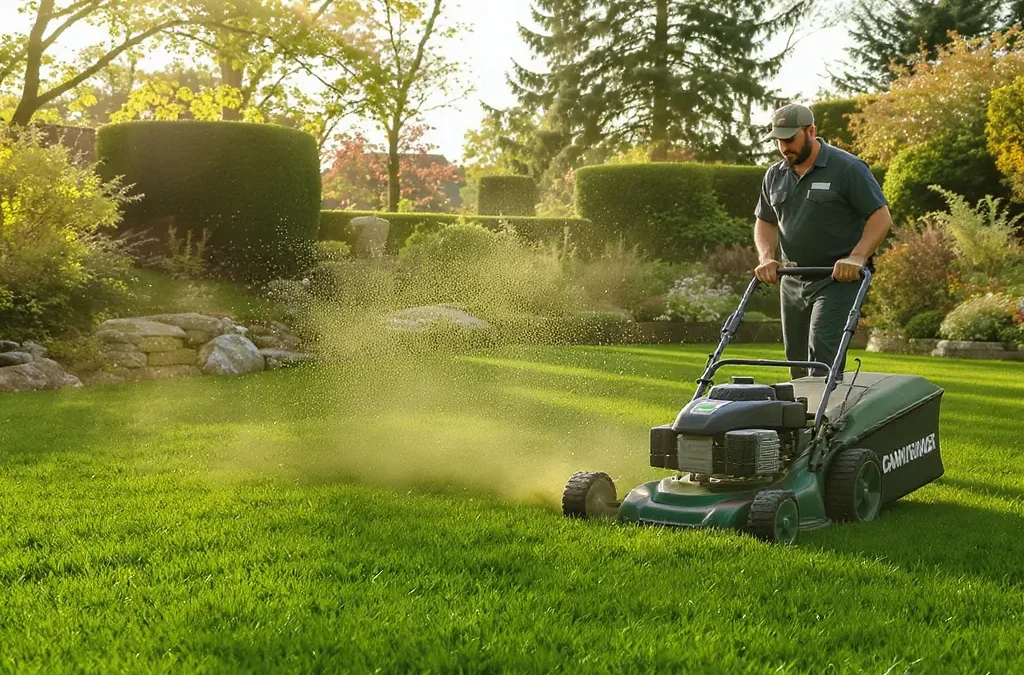Moss can quickly turn a vibrant lawn into a patchy, spongy mess—especially in West Sussex, where the combination of mild winters and frequent rainfall creates ideal conditions for moss growth. If you’ve struggled with persistent moss in your grass, you’re not alone. Over 60% of spring lawn treatment requests in the county are now moss-related, according to recent local service data.
In this comprehensive 2025 guide, we’ll explore why moss thrives in West Sussex lawns, the proven methods to control it, and how to prevent its return. Whether you’re a homeowner, property manager, or simply passionate about keeping your lawn healthy, you’ll find practical, science-backed strategies tailored to our local climate and soil conditions.
Moss in lawns is a symptom of underlying issues—shade, poor drainage, compaction, or low fertility. Long-term control means addressing these causes, not just killing moss.
— Royal Horticultural Society
Understanding Moss Growth in West Sussex
Moss is not a true plant in the same sense as grass. It lacks roots and draws moisture directly from rainfall and dew. This makes it highly competitive in damp, shaded, or compacted lawns. The 2024–2025 Met Office seasonal reports show wetter winters and reduced summer drought stress, which means moss can persist year-round.
Common local factors include:
- Clay-heavy soils that retain water
- Shaded areas under mature trees or buildings
- Poor lawn nutrition due to infrequent feeding
- Compacted soil from foot traffic or infrequent aeration
| Condition | Impact on Moss Growth | Prevalence in West Sussex |
|---|---|---|
| Shade | Encourages moss over grass | High |
| Poor drainage | Creates damp environment | High |
| Soil compaction | Restricts grass root growth | Medium |
| Low nutrients | Weakens grass competition | Medium |
Addressing these conditions is critical. Simply applying a moss killer without tackling underlying causes will lead to rapid regrowth.
Step-by-Step Moss Control Methods (2025 Update)
1. Iron Sulphate Treatment
This remains the gold standard for initial moss control. Applied in late winter or early spring during mild weather (above 5°C), iron sulphate turns moss black within days, making it easier to remove.
The best time to tackle moss is late winter to early spring, using iron-based treatments to blacken moss before scarifying.
— Lawnsmith Lawn Experts
2. Scarification
Scarifying removes dead moss and thatch, allowing grass to breathe and grow. For best results, scarify after moss has been treated and blackened. March–April is ideal when grass is actively growing.
3. Hollow Tine Aeration
Aeration relieves soil compaction and improves drainage. Hollow tine aerators remove plugs of soil, allowing water and nutrients to penetrate more easily.
4. Overseeding
After scarification and aeration, overseed with a high-quality grass mix suited to West Sussex conditions. This thickens the lawn, making it harder for moss to re-establish.
5. Soil Improvement
Apply a balanced lawn fertiliser in spring and autumn to strengthen grass growth. For seasonal guidance, see our Complete Seasonal Lawn Feeding Schedule for UK Gardens.
6. Shade Reduction
Prune back overhanging trees and shrubs to increase sunlight penetration, which naturally discourages moss.
7. Drainage Enhancements
Topdress clay-heavy areas with sand-based mixes to improve surface drainage.
Recent Trends in Moss Control
Eco-friendly moss control is gaining popularity in West Sussex, with homeowners choosing natural iron-based treatments or biological controls over synthetic chemicals. Robotic scarifiers and battery-powered aerators are making regular maintenance more accessible for DIY enthusiasts.
Integrated lawn health programs offered by local services now combine moss treatment with seasonal feeding, weed control, and soil testing to ensure long-term results.
| Trend | Description | Benefits |
|---|---|---|
| Eco-friendly treatments | Natural iron-based or biological moss control | Safe for pets and wildlife |
| Robotic scarifiers | Automated moss and thatch removal | Time-saving |
| Integrated programs | Combined feeding, aeration, and moss removal | Comprehensive lawn health |
Common Mistakes to Avoid
- Treating moss without improving drainage or soil conditions.
- Scarifying too early when grass is dormant.
- Using excessive chemical treatments without addressing shade.
- Ignoring seasonal feeding schedules.
These mistakes can waste time and money, leading to recurring moss problems.
Advanced Strategies for Long-Term Prevention
Consider a professional lawn soil analysis to determine nutrient levels and pH balance. This helps tailor fertilisation and maintenance for optimal grass health.
For shaded lawns, select shade-tolerant grass species when overseeding. Combine this with regular aeration and seasonal feeding to maintain a dense turf.
Implementation Guide for West Sussex Homeowners
- February–March: Apply iron sulphate treatment.
- March–April: Scarify, aerate, and overseed.
- April–May: Apply spring fertiliser.
- September–October: Autumn feeding and aeration.
Following this schedule aligns with local weather patterns and maximises lawn recovery.
For more detailed seasonal care advice, visit our Complete Seasonal Lawn Feeding Schedule for UK Gardens.
Conclusion
Moss control in West Sussex requires a combination of targeted treatment and long-term lawn health improvements. By applying iron sulphate in early spring, following up with scarification and aeration, overseeding, and addressing underlying causes like shade and poor drainage, you can transform your lawn from moss-covered to lush and green.
The key takeaway: prevention is more effective than reaction. Adopt a seasonal care routine, stay ahead of moss growth, and work with local lawn care professionals who understand West Sussex’s unique conditions. Your lawn will reward you with healthier, denser turf that outcompetes moss naturally.
By investing in the right methods now, you can enjoy a moss-free lawn well into the future.

